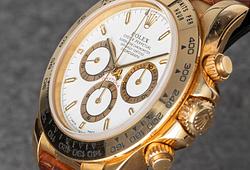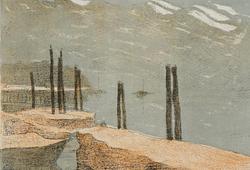Anders Zorn
"Gods-Kari"
Signed Zorn and dated 1916. Relined canvas 92 x 60 cm.
Tuontiarvonlisävero
Tuontiarvonlisävero (12%) tullaan veloittamaan tämän esineen vasarahinnasta. Lisätietoja saat soittamalla Ruotsin asiakaspalvelumme numeroon +46 8-614 08 00.
Alkuperä - Provenienssi
Private Collection, Great Britain
Näyttelyt
Liljevalchs konsthall, Stockholm, "Invigningsutställning : Larsson - Liljefors - Zorn", March-April 1916, no 133.
ARKEN Museum for Moderne Kunst, "Anders Zorn og nordisk samtidskunst", 26 June – 5 September 2004.
Kirjallisuus
Gerda Boëthius, ”ZORN. Tecknaren, Målaren, Etsaren, Skulptören”, 1949, listed in the catalogue under the year 1916 p. 554.
Muut tiedot
In this work, Anders Zorn has depicted young Gods-Kari in the beautiful winter costume of Mora. Gods-Kari's real name was Ester Jansson and she was born in 1897. With the clarity of a master, Zorn has captured the double play of light over the model and the costume. The natural light enters from the left of the painting and plays over the hands and the soft folds of the green skirt. The heat and light from the fireplace, which we can sense outside the image on the right, is reflected in the jacket, colouring God-Kari's cheeks a rosy red. The ivory-white coat and light-coloured shawl almost melt into the wall bathed in winter light. The accent of red in the hairband revealed, for those who were interested, that the woman was still unmarried.
One of Zorn's great ambitions in life was to preserve the culture of his home province and protect it from the excessive changes of industrialism. In his paintings from Mora and the surrounding area, there is often a concern for traditions, for example by highlighting the cultural uniqueness of the traditional dress and thus paying tribute to the people of Dalarna for holding on to their unique history. In 1874 his mother Grubb Anna Andersdotter had married Skeri Anders Andersson, with whom she had four daughters. The family's existence was often difficult and darkened by overcrowding and poverty. When Anders Zorn's career took off in England in the 1880s, he sought to alleviate his mother's situation by sending home small financial contributions. After Zorn acquired some of the Skeri farm land near Mora church in 1886, he also began using members of the Grubb and Skeri families as models for his paintings, such as "Our Daily Bread" (National Museum). The models had to "dress old-fashioned" because he wanted to recreate the local traditions of his childhood. Throughout his life, Zorn was committed to the "preservation of the national costume", and his depictions of the local men and women reflect his desire to realistically depict the traditional dress of Dalarna for posterity.




























